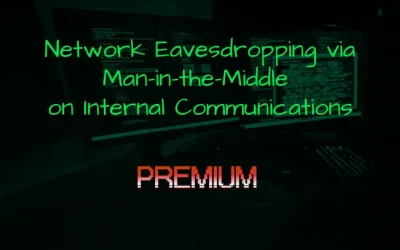Network Eavesdropping via Man-in-the-Middle on Internal Communications
During an internal penetration testing, our team discovered that internal network communications were vulnerable to eavesdropping through a man-in-the-middle (MiTM) attack.
OS Command Injection via ‘lang’ Parameter in Fortinet VPN SSL Interface
During an external pentesting, a critical OS Command Injection vulnerability was identified by our team in a Fortinet SSL VPN web interface, specifically through manipulation of the lang (language) parameter.
Critical FortiGate 100F SSL-VPN Vulnerability Exploited
During an external pentesting, our red team identified a critical vulnerability on FortiGate 100F firewall appliances. The issue is CVE-2022-42475 – a heap-based buffer overflow in FortiOS’s SSL-VPN service that allows remote, unauthenticated code execution.
XSS Vulnerability in the “Get a Quote” form while bypassing WordFence and CloudFlare
During an external penetration testing, we uncovered a Cross-Site Scripting (XSS) vulnerability in the newly introduced “Get a Quote” form on the client’s website. This weakness allows malicious script injection via user input, which was not caught by existing defenses (including Wordfence and Cloudflare Web Application Firewall).
Unauthorized LDAP Enumeration Exposes Active Directory for Privilege Escalation
During a penetration testing assessment, we revealed a critical weakness in the Active Directory (AD) environment stemming from improper LDAP access controls. Our Red Team successfully brute-forced a weak administrator password and remotely accessed a Windows server.
Oracle ILOM Compromise via EternalBlue
During a penetration testing assessment, our team identified a critical exploitation chain affecting an enterprise network. The attack began by exploiting the EternalBlue vulnerability on an unpatched Windows server, allowing remote code execution.







